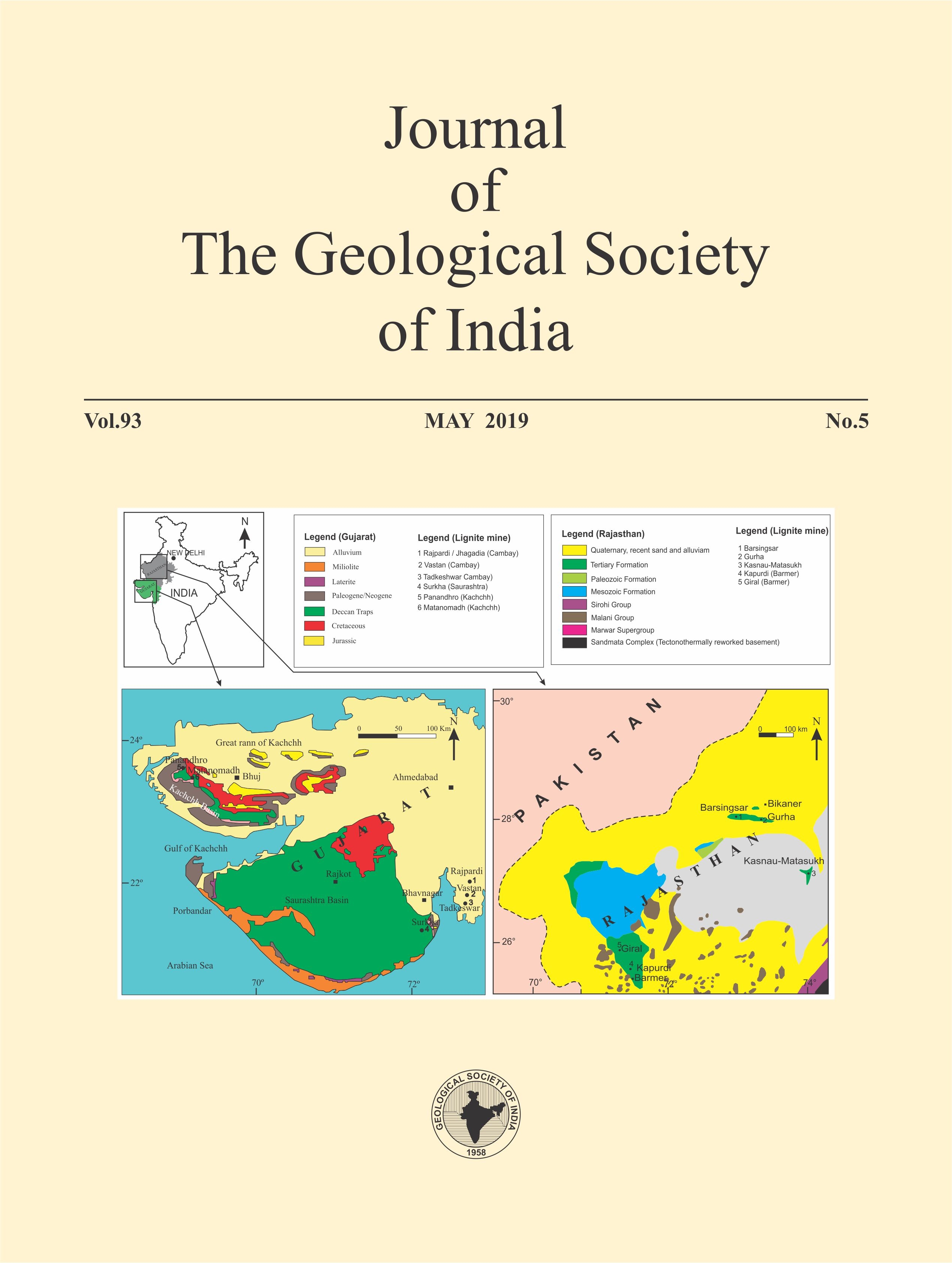Assessment of Indoor Radon and Thoron in Dwellings of Nangal Area Using SSNTD
DOI:
https://doi.org/10.1007/s12594-019-1223-8Abstract
Radon effect on human health need not be overemphasised. In the present study an attempt has been made to measure the concentration of indoor radon, thoron and annual effective dose received by residents of Nangal area of Roopnagar District of Punjab. Radium concentration and Radon exhalation in soil samples are also calculated. Indoor radon concentration varies from 93.1 Bqm-3 to 127.0 Bqm-3 with an average of 95.4 Bqm-3. The value of thoron concentration varies from 5.4 Bqm-3 to 47.2 Bqm-3 with an average of 24.0 Bqm-3. The observed annual effective dose varies from 2.3 mSv to 3.7 mSv which lies within safe limits recommended by ICRP (International Commission on Radiological Protection). Radon gas concentration in soil samples vary from 8.4 to 64.1 Bqm-3 with an average of 31.4 Bqm-3. The mass exhalation rate in samples vary from 0.2 to 2.7 mBq kg-1 h-1 with an average of 1.1 mBq kg-1 h-1, whereas, surface exhalation rate vary from 6.9 to 52.5 mBq m-2 h-11 with an average of 23.6 mBq m-2 h-1. The radium concentration ranges from 0.5 to 3.5 Bq kg-1 with an average of 1.8 Bq kg-1. The observed values of radium concentration in all soil samples are less than the recommended value 370 Bq kg-1 by OECD (Organization for Economic Corporation and Development).Downloads
Metrics
Issue
Section
Downloads
Published
How to Cite
References
Azam, A., Naqvi, A.H., Srivastava, D.S.(1993) Radium content and radon exhalation measurement using LR-115 type II plastic track detectors, Nucl. Geophys. v.9(6),pp. 653-657
Borana, R. (2015) Report on Ropar district Punjab, Central Ground Water Board, Ministry of water resources, Government of India, North western region Chandigarh
Beir, I.V. (1988) Health Risks of Radon and Other Internally Deposited AlphaEmitters National Research Council (US) Committee on the Biological Effects of Ionizing Radiations. Washington (DC): National Academies Press (US).
http://rupnagar.nic.in/html/Nangal.htm, (accessed on March 4, 2018)
Hunse, T.M., Najeeb, K.Md., Rajarajan, K., Muthukkannan, M. (2010) Presence of Radon in Groundwater in Parts of Bangalore. Jour. Geol. Soc. India, v.75, pp.704-708.
International Commission on Radiological Protection (1993) Protection against radon-222 at home and at work, v.23(2),pp. 1–38
Mayya ,Y.S., Eappen, K.P., Nambi, K.S.V. (1988) Methodology for mixed field inhalation dosimetry in monazite areas using a twin cup dosimeter with three track detectors. Radiation Protection Dosimetry, v.77(3), pp.177-184
Mehta, V., Singh, S.P., Chauhan, R.P., Mudahar, G.S. (2014) Measurement of indoor radon, thoron and their progeny levels in dwellings of Ambala district, Haryana, Northern India using solid state nuclear track detectors. Rom. Journ. Phys., v.59 (7-8), pp. 834-845
Mehta, V., Kumar, A., Singh, S.P., Chauhan, R.P., Mudahar, G.S. (2015) Measurement of indoor radon, thoron and their progeny levels in dwellings of Union Territory Chandigarh, India: correlation with radon exhalation rates. Indoor and Built Environment, v.24(6), pp.833-842.
Mehta, V., Singh, S.P., Chauhan, R.P., Mudahar, G.S., (2015) Study of Indoor Radon, Thoron, Their Progeny Concentration and Radon Exhalation Rate in the Environs of Mohali, Punjab, Northern India. Aerosol and Air Quality Research, v.15, pp.1380-1389
Najeeb, K. MD., Vinayachandran, N., Jose, B., Vashistha, R. (2014) Radon in Groundwater in Tumkur District of Karnataka with Special Reference to Sampling Sensitivity. Jour. Geol. Soc. India, v.83(6), pp.665-668.
Prasad, M., Rawat, M., Dangwal, A., Kandari, T., Gusain, G.S., Mishra, R., Ramola, R.C. (2016) Variability of radon and thoron equilibrium factors in indoorenvironment of Garhwal Himalaya. Jour. Environ. Radioactivity, v.151, pp.238-243.
Report on aquifer mapping and management plan (2017) Ropar district Punjab, Central Ground Water Board, Ministry of water resources, River development and Ganga rejuvenation, Government of India, North western region Chandigarh
Shikha, D., Mehta, V., Chauhan, R.P., Mudahar, G.S.(2018) Measurement of Variation of Radon-Thoron and their Progeny Concentrations in Dwellings using Pin Hole Based Dosimeters. Aerosol and Air Quality Res., v.18, pp. 811–819
World Health Organization (2009) "WHO handbook on indoor radon: a public health perspective”. Geneva

 Rupinderjeet Kaur
Rupinderjeet Kaur






